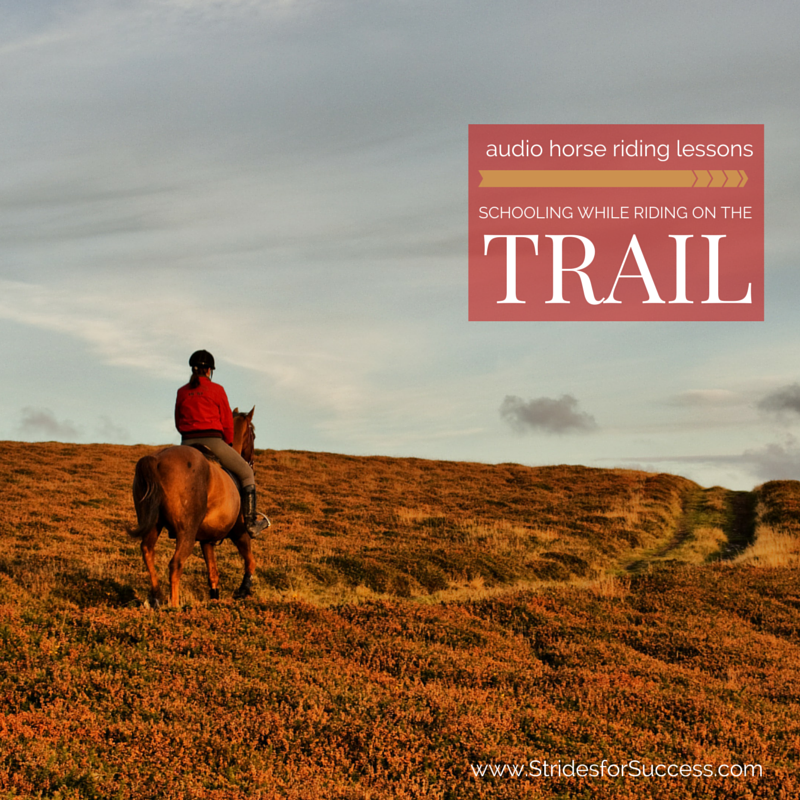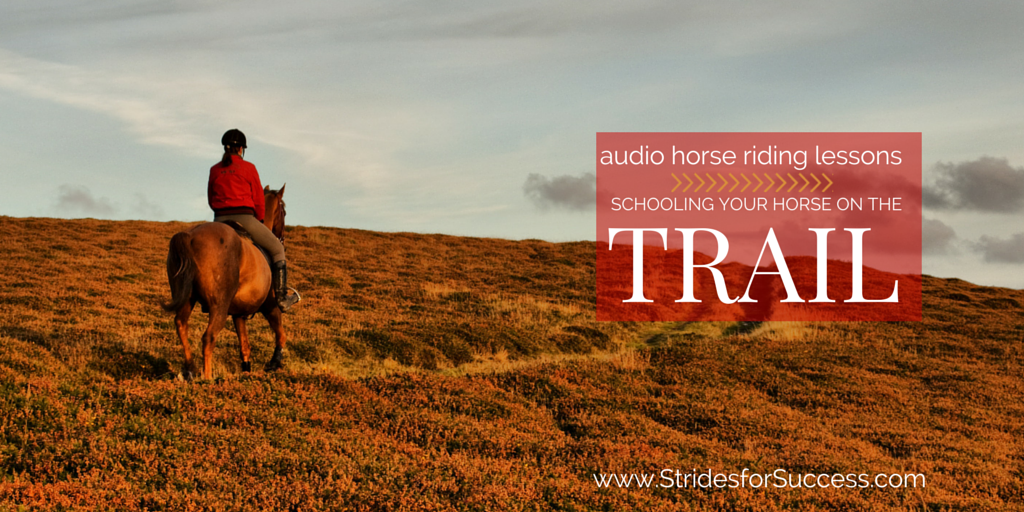Trail riding or hacking is a fantastic way for both you and your horse to experience the world outside the gates of the arena.
However many riders look at riding on the trail as merely a way to relax and unwind. And while they are not wrong, riding along a bridle path is a fantastic way at boosting the connection between you and your horse, it is often an overlooked opportunity for schooling and working through different exercises and movement, with the advantage of doing so in a different environment and from a different perspective.
The benefits of trail riding are numerous, from relaxation to preventing sourness in the arena. From building confidence to helping your horse become more sure-footed and of course, strengthening tendons and ligaments with your road work. Trail riding also helps increase and reinforces the bond between you and your horse, not to mention allowing you the opportunity to just enjoy your horse while surrounded by nature!
The trail is very often an overlooked opportunity to work with your horse and engage their mind in a different and beneficial way than just endless circles and school movements in the arena.

Many riders will agree that while out of the arena and on the trail, their horses have more energy and forward movement. Focus your attention on how you deal with this new energy supply that you can harness while on the trail.
Instead of fighting and arguing with your horse, which often only results in an uncomfortable jig-jog for the duration of the ride, rather direct that energy into some exercises and movements that, when performed in the arena, perhaps lack the same enthusiasm, flexion, suppleness and lightness.
In order to perform any of these movements, it is important to have first developed your eye to see a ‘line’. Without the aid of the arena wall or fence, you may find that straightness while working becomes compromised, resulting in you riding ‘lines’ that have the ability to induce sea sickness in a sailor.
Begin practicing this by softly focusing on something in the distance on the trail and then, paying careful attention to both you and your horses shoulders and hips, ride straight to that object. This is the sort of exercise that really benefits from ground where you leave a track of hoof prints behind you.
Once you can ride a fairly straight line and hold that line as you work, you can then begin adding some transitions onto the line, again, paying attention to how straight both you and your horse is through the transition and how established the rhythm and tempo are when riding each gait.
As I mentioned, often while on the trail, you horse will be more exuberant in his movement, which you can use to your advantage. Rather than trying to ‘rein the energy in’, work with it and shift your mindset to this new ‘normal’ when working outside of the arena.
After working through your transitions, you should have a more defined ‘line’ in your head, which will be important for the next movement I suggest you ride; shallow 5m loops. Most tracks and trails are at the very least 3 meters wide, and if your track does not allow the full 5m, vary your movement to 3 meters. What is important here is that you are focusing on straightness, then the bend, and then changing the bend and back to the straight line.
Having the ‘line’ clearly defined in your head will be paramount to performing the movement correctly. You may also have to practice this a few times on the trail, firstly in walk and then trot due to the extra energy your horse has on the trail meaning that it will look and feel different to how he would normally ride it in the arena.
Later, as both you and horse get better and better at this, you can begin performing the exercise in canter, which is a great introduction to counter canter. Just remember that when riding a 5 meter shallow loop in canter, the horses bend must stay over the lead leg. Often the temptation to ‘steer’ the horse back to the line using your hand and reins is very strong, however this will change the bend. You must use your legs to ask the horse where to go with his body in this exercise.
You can also change the ‘length’ of your loop, and begin asking for more loops from your horse in the same distance. This will test both you and your horses balance and ability to wait. It will also require a degree of suppleness if it is to be ridden correctly.

Another exercise which is often easier when outdoors on the trail is leg yielding. You can ask your horse to yield from one side of the road to the other, over and back and over again. This too can first be asked for in walk and then later in trot. Break the yielding by mixing it with straight-lines and transitions as well, so your horse can also rest.
Shoulder in can also be incorporated into your ride. Again, you need to have a well-defined ‘line’ and your horse will also have to have a certain level of prior training.
It is worth mentioning that introducing these exercises slowly and for small periods of time is important to keeping your trail riding productive. If in the past, your horses experience of riding on the trail or anywhere outside of the arena has been to relax, it will do both him and you good to, as always, warm up correctly and then ask for 2 to 5 minutes of work. Follow this with a break or relax period and then ask for another short period of work.
Introduce the exercises slowly, allowing your horse to build his physical strength and abilities, while also conditioning him mentally, for schooling while on the trail; both of which are vital for success.
Happy Riding
Lorna
